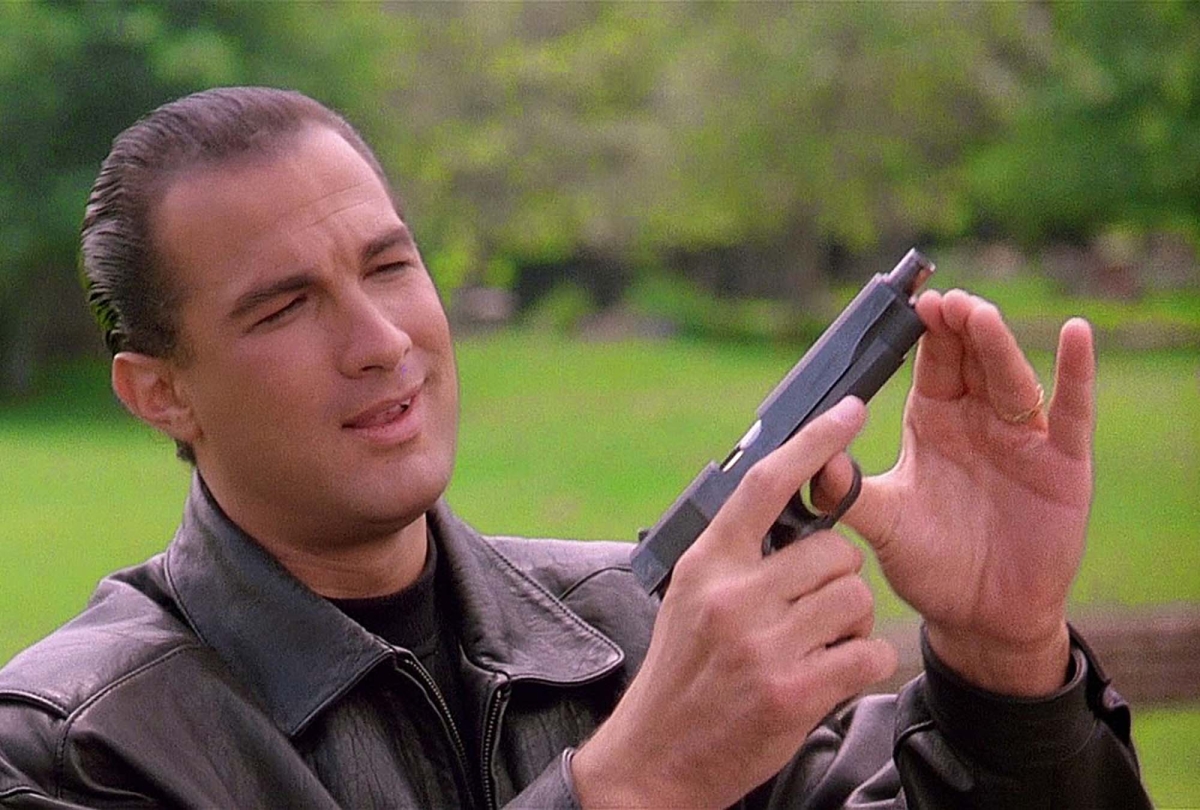Gun pills: chamber check, Davy Crockett style
Making sure if a gun is loaded or not, with “a round in the barrel”, is a primary safety check that is not related to just modern firearms: and the “chamber check” in fact was already in use with muzzle-loading guns.
Action movies have accustomed even the least gun-cultured among the public to the hero heading into the fray, but not before making sure his firearm is correctly loaded by performing a quick “chamber check”, by pressing the slide of the handgun slightly back, enough to partially expose a chambered round.
This need is as old as firearms are, though, and back in time where muzzleloaders dominated the battlefield and the hunting grounds, making sure of the readiness of a gun was equally vital in both situations, since pulling the trigger on an unloaded musket could be as fatal in battle as in the last hunt before a long winter, where failing to bag that deer could mean going… terminally lean.
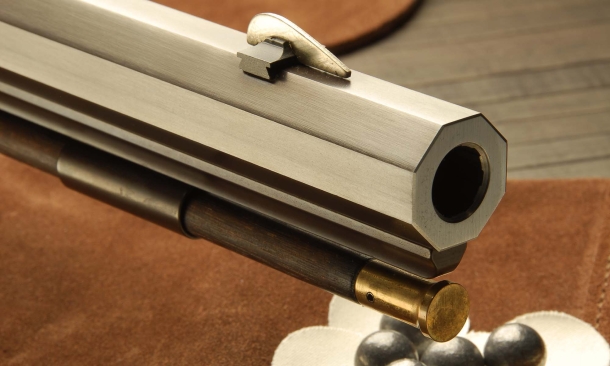
In a muzzle loading gun, the muzzle hole is the only "access point" to the barrel
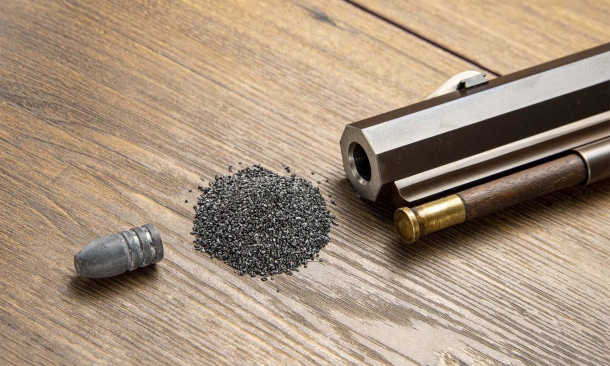
Black powder and bullet: once loaded, in a muzzle loading gun is not possible to "see" what's in the barrel
Given that Davy Crockett or Jim Bowie could not just slightly open the action to see if they had a chambered cartridge through the ejection port, lacking an ejection port and metallic cartridges, how did they check their gun was loaded? Just loading it again was not an option, as double loading may have caused a severe breaking of the barrel.
Well, the answer is simpler than one might think. Muzzle-loading guns were (and still are) loaded by using a loading ramrod, to push the bullet down the barrel and position it at top of the black powder charge.
To check if the gun was loaded, people just pushed the ramrod of their gun down the bore of the barrel, from the muzzle:
- If the ramrod went all the way down, the barrel was empty, that is, unloaded.
- If instead the ramrod remained "visibly" out of the muzzle, this indicated that the barrel was loaded, with powder and lead, over the breech.
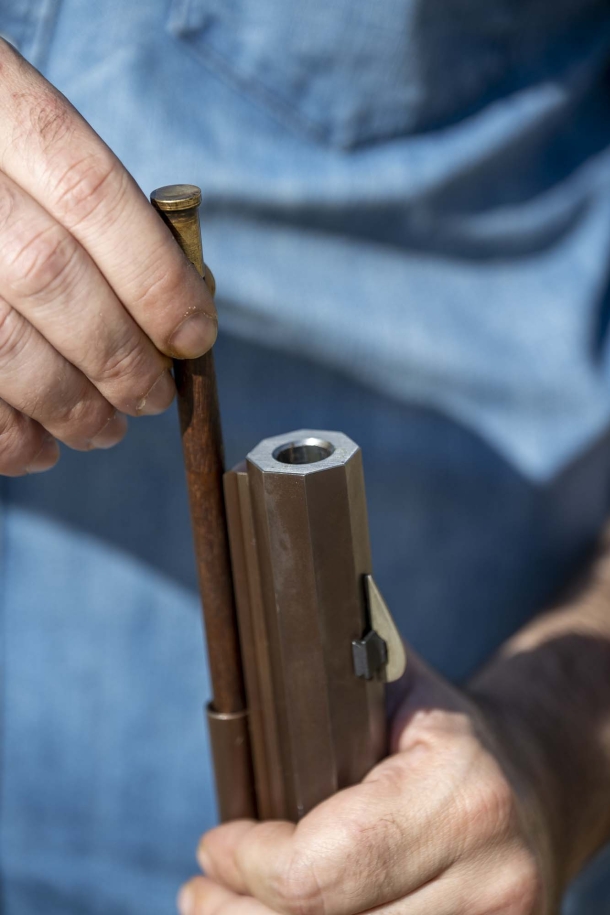
Image 1
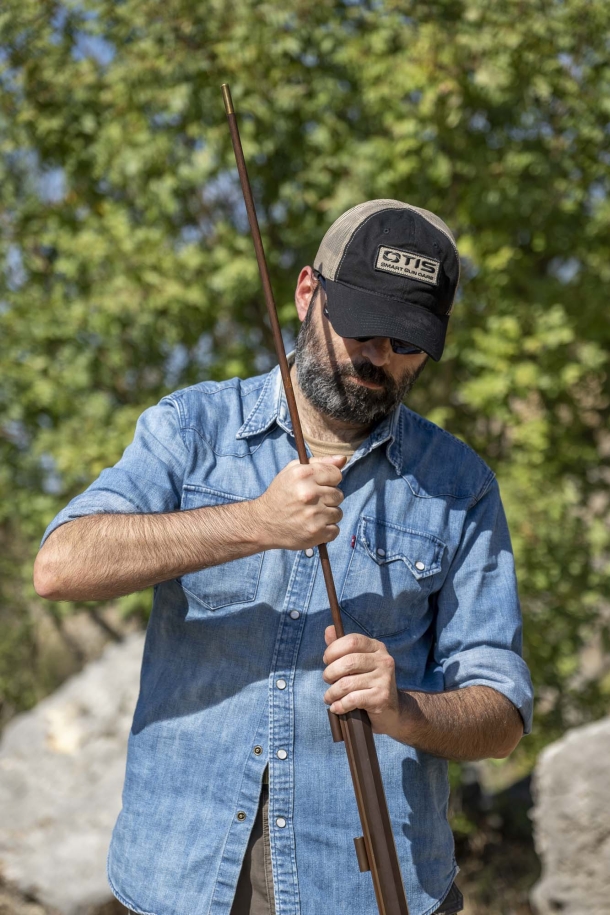
Image 2
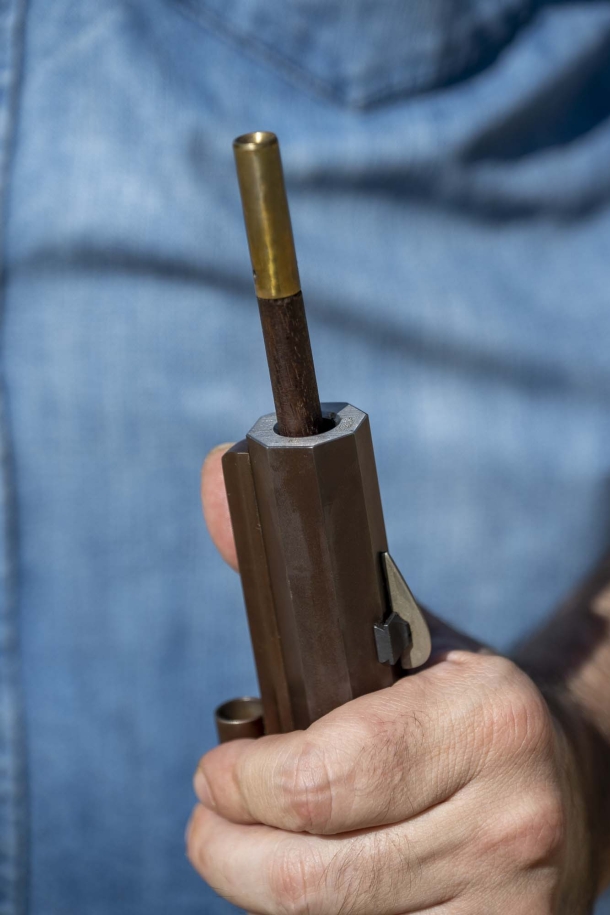
Image 3
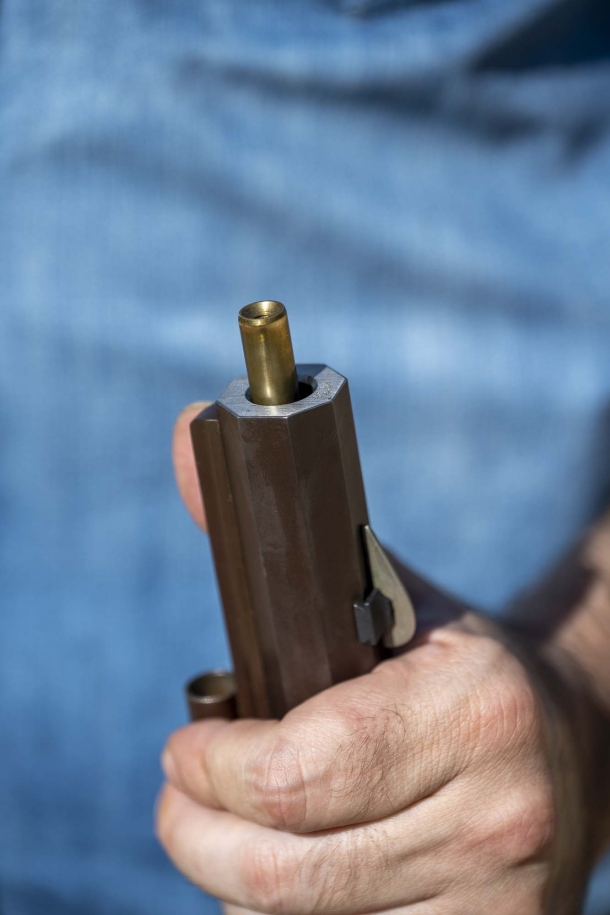
Image 4
The amount of penetration of the ramrod into the bore shows if the barrel is loaded (image 3) or not (image 4).
Each rifle, shotgun or pistol had its own ramrod, different in lenght, and people had to get to know how much "in or out" each specific ramrod indicated an empty or loaded barrel. And because of this, ramrods were often "marked" manually (with circular notches around the stick) so to help understand not just only IF the barrel was loaded, but also with how much powder.
This system is used exactly the same way, still today, by modern muzzleloader shooters and hunters.
The ramrod test was equally effective both on smoothbore and rifled guns, on muskets and pistols, even on artillery, and was used until the advent of the cap-and-ball revolver, where just a glance at the chambers would reveal the loaded status of the firearm. Then, with the arrival of breech loading firearms, the chamber check became just a matter of... opening the breech and give a look in.



